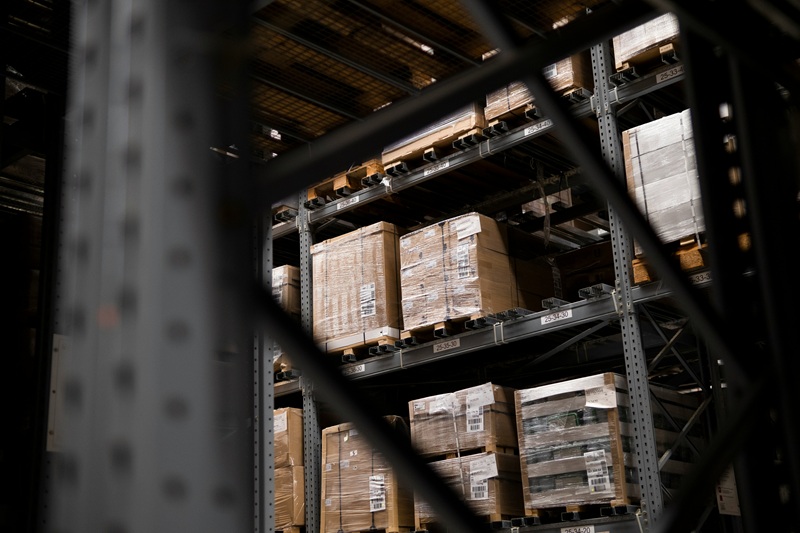Want to future-proof your warehouse safety systems?
Automation dominates the warehouse industry which is undergoing unparalleled transformation. Guard rail systems continue to advance quickly to support modern distribution centers and smart warehouse needs.
Here’s the thing…
Traditional guard rail installations are becoming outdated. Protection systems for future warehouses must demonstrate unprecedented adaptability and integration capabilities while delivering performance levels that we could not have envisioned just a few years back.
The year 2025 will witness substantial growth in warehouse automation through the integration of AI technology alongside robotic systems and digital twins to improve operational efficiency and system robustness. The technological revolution requires guard rail systems to operate differently while seamlessly integrating into these advanced settings.
The development of guard rail systems now includes materials that are lighter in weight but stronger than traditional options through the adoption of carbon fiber or advanced polymer technologies which provide superior impact resistance and durability.
What you’ll discover:
- Smart Integration Technologies Transforming Warehouses
- Revolutionary Materials Changing Guard Rail Construction
- Automated Safety Systems for Modern Distribution Centers
- Customization Solutions for Diverse Warehouse Environments
- Cost-Effective Approaches to Future-Ready Protection
Smart Integration Technologies Transforming Warehouses
Warehouse guard rails are getting smarter. Contemporary systems use sensors and connectivity features along with real-time monitoring capabilities to turn passive barriers into dynamic safety networks.
Intelligent guard rail systems can sense collisions while monitoring structural health and predict upcoming maintenance needs before failures happen. Integrating warehouse management systems with these sensors creates comprehensive safety data which aids both operational optimization and accident prevention.
But here’s what makes this really exciting…
Today’s guard rail systems work in conjunction with automated guided vehicles (AGVs) and robotic systems to achieve advanced warehouse protection. Warehouse automation equipment receives communication from guard rail systems which helps them avoid collisions and manage traffic flow effectively across the facility.
Companies like Rhino Rails are leading this technological integration, developing guard rail systems that seamlessly connect with existing warehouse infrastructure while providing enhanced protection for both equipment and personnel.
The integration goes beyond simple collision detection. Modern advanced systems feature capabilities to monitor environmental conditions including temperature fluctuations, humidity levels, and air quality around crucial areas. The comprehensive approach maintains safety standards within warehouse environments by staying compliant with changing industry requirements.
Revolutionary Materials Changing Guard Rail Construction
The shift to new materials in guard rail construction represents a groundbreaking development. Advanced polymer systems and carbon fiber composites now replace steel in several applications because they deliver better strength-to-weight ratios together with improved durability.
These newly developed materials demonstrate resistance to corrosion while needing minimal upkeep and enduring severe temperature fluctuations found in contemporary warehouse settings. These modern materials demonstrate resistance to chemical degradation and maintain their structural integrity throughout their lifespan.
Advanced polymer guard rails provide distinct benefits with their ability to flex during impact plus some of them heal themselves and maintain structural integrity while embedding sensors.
Custom color coding and visual identification systems become possible through the use of composite materials. Warehouse safety systems use multiple colored guard rails to mark distinct areas for hazard levels and traffic patterns. The visual management system helps to strengthen safety measures while increasing operational efficiency.
Automated Safety Systems for Modern Distribution Centers
Warehouse automation keeps expanding to deliver benefits including superior inventory control. The recent move towards warehouse automation underscores how vital it is to enhance safety and operational efficiency with guard rails serving as fundamental protection for automated equipment and human personnel.
Automated adjustment capabilities have been integrated into the newest generation of guard rail systems. The systems possess the ability to modify their configuration to meet operational demands by raising, lowering or changing their structure. Automatic deployment of additional barriers takes place during peak traffic periods to manage crowd flow and stop bottlenecks from forming.
Integrated smart safety systems work with warehouse lighting to establish dynamic visual signals that control traffic flow and warn workers about possible dangers. These installations and floor marking systems work together to establish adaptable safety zones that meet evolving operational needs.
Guard rail systems with embedded motion sensors identify unauthorized entries into restricted zones. These sensors activate instant alerts while enabling integration with security systems for complete monitoring of facilities. The emergency response system contains automatic unlocking features along with connections to fire suppression systems.
Customization Solutions for Diverse Warehouse Environments
Guard rail systems now allow for customization across various spaces and angles which helps maintain safety while preserving operational efficiency. Warehouse layouts achieve optimal protection through adaptable guard rail system configurations.
Warehouse managers can update guard rail systems to meet evolving operational demands using modular design principles. The system allows individual components to be moved, expanded, or changed without the need for total system replacement. The ability to adapt guard rail systems helps lower ongoing expenses while keeping safety standards stable.
Height-adjustable systems provide flexibility for different equipment sizes and operational needs. A single guard rail installation can serve to protect equipment from forklift collisions in one setup and act as a personnel safety barrier in another setup. Quick-release mechanisms facilitate fast transitions between various operational modes.
Multi-tier guard rail systems deliver protection across multiple levels at the same time. The lower barriers shield equipment and infrastructure from damage while the upper barriers provide protection to elevated walkways and mezzanine areas.
d minimal disruption to ongoing warehouse operations. Prefabricated modular components enable quicker installation processes while maintaining uniform quality standards throughout the facility.
Warehouse floors remain unaltered because quick-mount systems forgo extensive drilling and permanent changes. Magnetic mounting systems deliver secure installation for steel structures without affecting structural integrity. These systems allow relocation and configuration changes to meet evolving operational requirements.
Wireless installation methods simplify cable management while removing tripping dangers. Battery-powered systems that function for extended periods reduce maintenance needs while maintaining steady performance.
Before starting physical installation work professional installation groups use augmented reality tools to plan guard rail placement. The deployment of this technology limits mistakes and perfects installation placement while maintaining safety standards and reducing time required for installation.
Cost-Effective Approaches to Future-Ready Protection
Guard rail system budgeting should focus on the ongoing operational expenses instead of just the initial buying costs. While advanced materials require greater initial investment they offer substantial savings because they reduce maintenance needs and extend the service lifespan.
Leasing options enable access to cutting-edge technology without the need for substantial upfront capital investment. These arrangements commonly come with maintenance and technical support which makes them appealing to businesses that need to manage cash flow effectively.
Installation costs for guard rails can be reduced through government subsidies and safety grants. Several regions provide monetary support for workplace safety enhancements which reduces the cost burden of advanced guard rail systems.
Final Thoughts on Tomorrow’s Warehouse Protection
Guard rail technology will undergo a foundational transformation from traditional passive barriers to advanced intelligent safety ecosystems. Advanced systems work alongside warehouse automation to deliver real-time monitoring while adjusting to operational changes.
Guard rail implementation success in future applications requires insights into existing needs along with strategic operational objectives. The highest-quality systems unite reliable protection features with innovative enhancements that improve everyday operations without causing complexity.
Advanced guard rail technology investment leads to fewer accidents and better operational efficiency while ensuring companies meet regulatory standards. Future warehouse guard rail systems will need to function beyond mere collision prevention by forming integrated safety networks which not only preserve essential protective functions for workers and equipment but also boost operational performance.










Leave a Reply